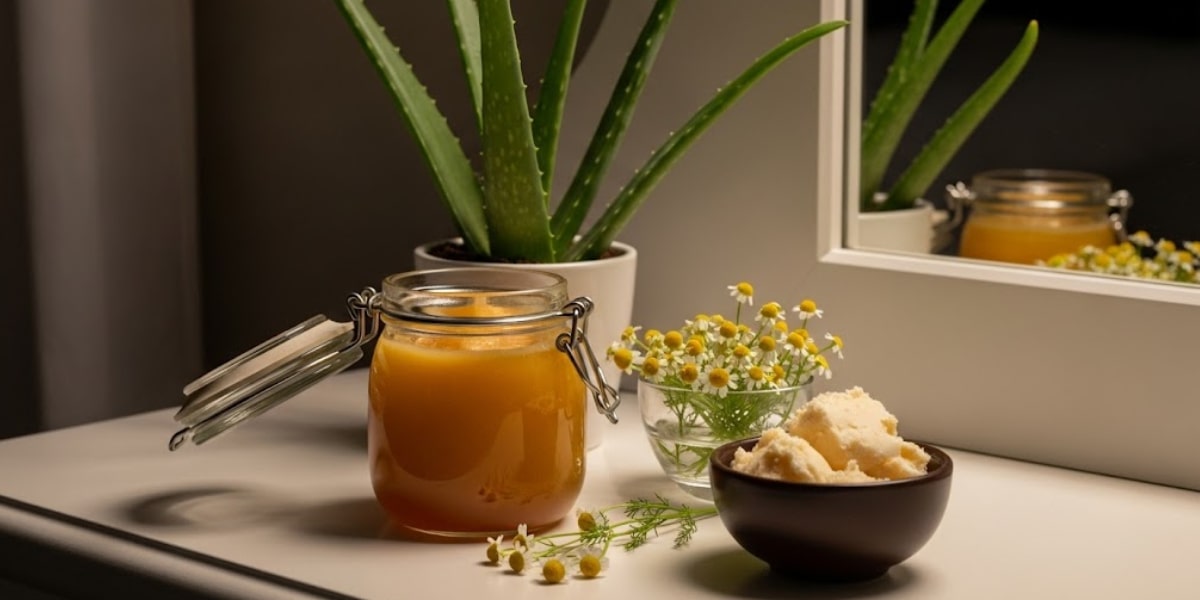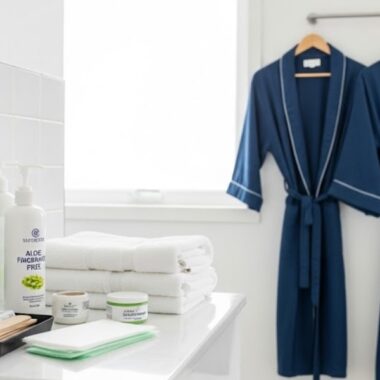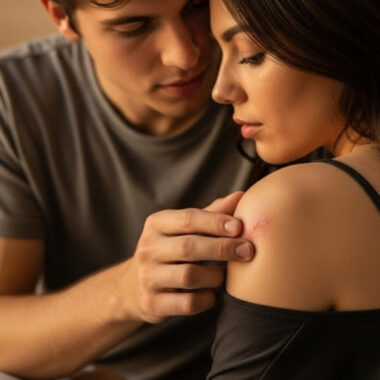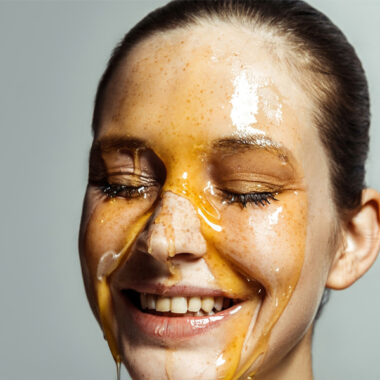Whipped honey DIY skincare is often praised for its natural benefits, but using the wrong ingredients or skipping key steps can worsen sunburned skin during nights when your body should be healing. If you’ve ever tried a whipped honey DIY remedy for skincare after a day in the sun and woke up irritated instead of soothed, you’re not alone. Many underestimate how fragile burned skin becomes overnight.
When applied before bed, a properly formulated whipped honey DIY mix can cool sunburned skin, support recovery, and lock in moisture. But without the right texture, ratio, or timing, it may do more harm than good.
This article will explore how whipped honey works on damaged skin, what ingredients to use or avoid, and how to create a DIY solution tailored for night use. You’ll also learn why nights are critical for skin repair and how this natural method can elevate your post-sun skincare routine.
Whipped Honey DIY: Soothing Skincare for Sunburned Nights - Why Timing, Texture, and Ingredients Matter
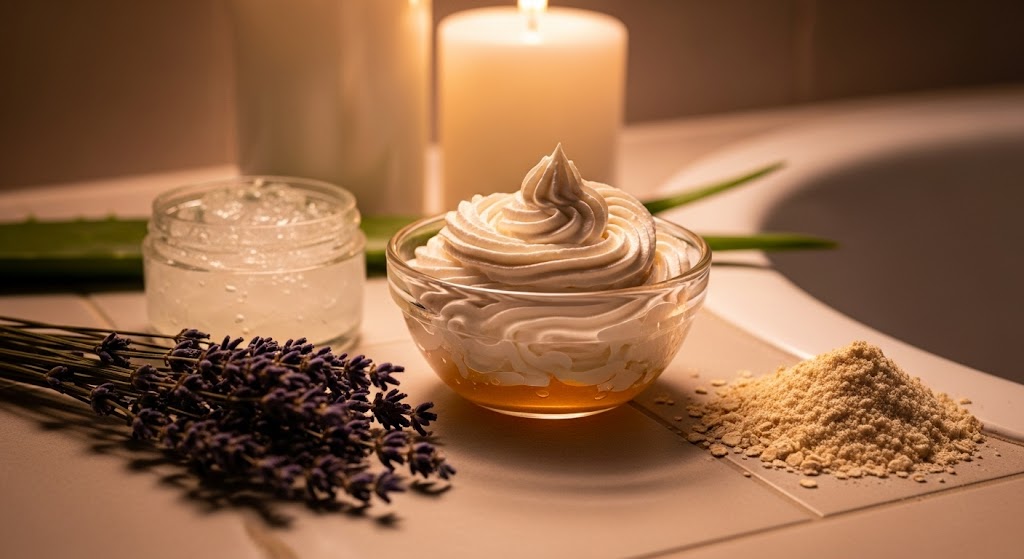
If your skin feels tight and overheated after a day in the sun, night is when the real damage control begins. Whipped honey DIY recipes explicitly designed for skincare can bring instant relief—but only if done correctly. This section breaks down the safest, most effective ways to use whipped honey on sunburned skin, with tips prioritizing your skin’s overnight healing cycle.
Choosing the Right Honey for Whipped Skincare
Not all honey is created equal, especially when it comes to skincare. The type of honey used in your DIY recipe can affect how your skin responds to treatment.
- Raw honey contains active enzymes and antibacterial properties essential for calming sunburned skin.
- Manuka honey is preferred for its higher concentration of methylglyoxal, a natural healing agent that enhances skin regeneration.
- Avoid processed or flavored honeys, which often contain additives or sugar that can irritate damaged skin.
Look for organic, unfiltered honey with a thick texture. This provides better moisture retention and won’t run off the skin while you sleep.
Why Whipped Texture Enhances Application and Absorption
Its texture is a key part of a successful whipped honey DIY routine. Whipping introduces air into the mixture, giving it a light, spreadable quality ideal for nighttime skincare.
- Whipped textures create a breathable layer that doesn't clog pores.
- The light consistency spreads evenly without dragging on sunburned skin.
- It also helps lock in hydration while minimizing sticky residue on pillowcases.
To achieve consistency, use a stand or hand mixer and whip your honey for 10 to 15 minutes. You can blend it with skin-safe oils or soothing agents for added benefits.
Safe Additions to Your DIY Mix for Night Use
While honey is the base, certain ingredients can enhance your skincare routine, only if they are non-irritating and safe for sunburned skin. Avoid anything that generates heat or stings.
Recommended additions:
- Aloe vera gel for hydration and cooling
- Chamomile extract for calming inflammation.
- Jojoba oil to mimic the skin’s natural oils.
Avoid these: essential oils, citrus, menthol, or anything labeled as exfoliating. These can worsen burns or disrupt overnight healing.
Always patch test any DIY blend before applying, especially if the skin is damaged.
When and How to Apply Whipped Honey at Night
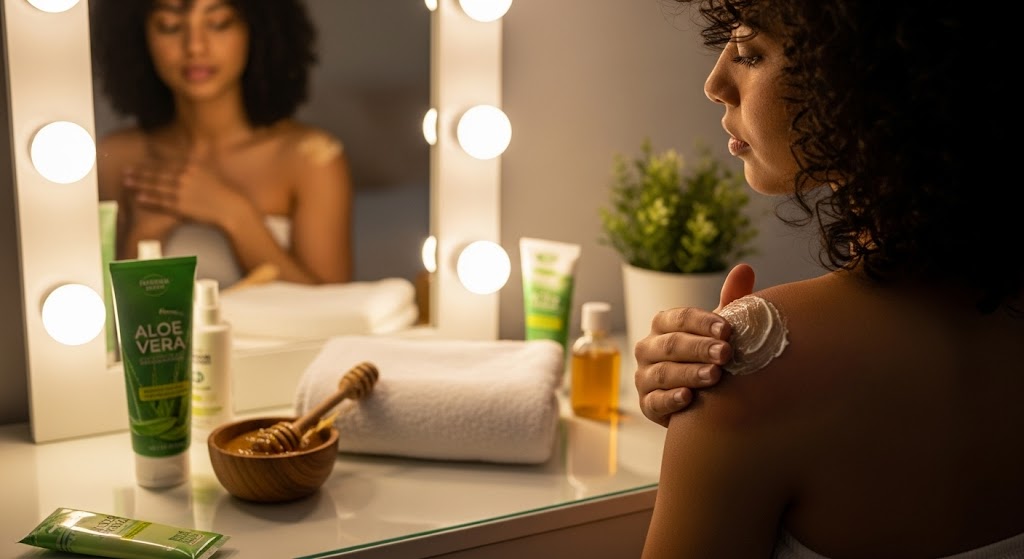
Application timing can affect whether your skin heals or flares up again. Because your skin goes into repair mode during sleep, night is the ideal time to use your whipped honey DIY.
- Gently cleanse your skin with cool water and a soft cloth before applying.
- Pat dry completely; applying on damp skin can trap heat.
- Use a sterile spatula or fingers to apply a thin, even layer over the sunburned area.
- Allow the product to absorb for 10–15 minutes before lying down.
If you're worried about residue, you may rinse it off after an hour, though most people find leaving it on overnight gives the best results.
How Whipped Honey Supports Overnight Skin Recovery
What makes honey unique in skincare is its dual action—it protects the surface while helping skin regenerate from within. Healing accelerates at night when your skin is less exposed to pollutants and UV rays.
- Honey reduces inflammation and redness commonly caused by sunburned skin.
- Its antibacterial qualities prevent infection in open or blistered areas.
- Whipped honey supports hydration, preventing peeling and tightness.
Regular use over a few nights can visibly reduce signs of sun damage, smooth texture, and restore balance to dehydrated skin.
Mistakes to Avoid in Whipped Honey DIY for Sunburn Relief
DIY routines can go wrong, especially when you use trendy ingredients without proper research. When treating sunburned skin, avoid these common missteps.
- Using unsterilized containers to store your whipped mix can introduce bacteria.
- Skipping a patch test can result in allergic reactions, especially when adding new ingredients.
- Applying to hot or burning skin can trap heat and worsen symptoms.
Let your skin cool down fully before applying any DIY product, and never use store-bought products claiming to be “whipped honey” unless you check the complete ingredient list.
Creating a Nighttime Routine That Heals and Prevents Damage
Sunburn doesn’t end when the sun goes down. Setting a consistent skincare routine using whipped honey helps repair existing damage while preparing your skin for the next day.
A suggested routine:
- Cool shower using fragrance-free cleanser
- Apply whipped honey blend and let sit.
- Optional: layer with aloe-based gel once the honey is fully absorbed
- Hydrate internally by drinking water before sleep.
Repeat this routine for at least 2–3 nights, depending on the severity of the burn, or until redness and sensitivity subside. Prevention is key, so always use SPF daily and reapply as needed.
Conclusion
Whipped honey DIY isn’t just another trendy skincare hack. When used correctly, it becomes a powerful tool for calming and healing sunburned skin during the most crucial time—nights. By choosing the right honey, mixing with care, and applying with precision, you create a safe, effective remedy that your skin will thank you for every morning.
FAQs
Yes, but it should be applied gently and only after the initial heat and swelling have subsided. Whipped honey can help soften peeling areas and reduce tightness, but avoid rubbing it into cracked or blistered skin.
If using raw honey without perishable additives, it’s safe to store at room temperature in a sealed, sterilized container. However, refrigeration is recommended to prevent spoilage if you've added ingredients like aloe or fresh extracts.
Wait at least one to two hours after sun exposure to allow the skin to cool completely. Applying anything too soon can trap heat and worsen the burn.
Yes, whipped honey offers moisturizing and anti-inflammatory benefits suitable for nightly use. It's beneficial for dry or irritated skin, even without sunburn.
Yes. Use a thinner layer for facial application and avoid sensitive areas like around the eyes. The face is more prone to clogged pores, so lighter applications and shorter wear times are best.
If those products are unscented and designed for sensitive or post-sun skin, avoid layering whipped honey with active ingredients like retinoids or acids, increasing sensitivity and interfering with healing.

